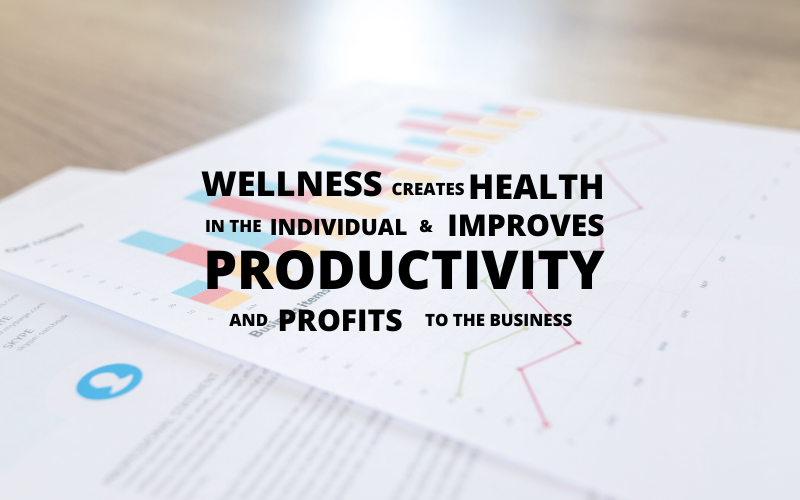The impact of mental illness on workplace productivity and finances
Embedded Expertise, Published: January 30, 2020 - Updated: August 30, 2022
Adding up the cost of mental health: a business case for wellbeing.
You would have to be living under a rock not to have noticed talk of mental health and its increasing prevalence and impact across society. As the stigma around mental health falls away we’re seeing more studies and discussion around the real impact of mental health – both in private, public and business realms.
As this blog will outline, mental health related problems can cost organisations billions of dollars every year – but there is also opportunity for organisations to gain from investment in wellness programs.
Below we outline some current statistics that indicate the business cost of not addressing mental health…
Mental health: a key workforce issue
Mental health issues are on the rise and impacting organisations, with more than one third of Australians working in corporate jobs identifying as suffering from a mental illness.
According to the Australian Human Rights Commission, ‘job stress and other work-related psycho social hazards are emerging as the leading contributors to the burden of occupational disease and injury’.
All employers have an obligation to take appropriate steps to eliminate and minimise health and safety risks in the workplace, including mental health. This should extend to permanent, casual or contract staff, who are equal contributors to the organisation’s success.
The cost of absenteeism
Most obviously, work related stress and illness have been linked to significant absenteeism, staff turnover and a reduction in productivity, output and results. Comparatively, an investment in health leads to productivity, performance, engagement and, of course, success and profit (more on this below). Deloitte recently announced that less than twenty per cent of people are happy at work, which further contributes to stress and absenteeism.
A staggering 138 hours per person, per annum, can be accounted for in absenteeism related to mental illness. PWC estimated that absenteeism due to mental illness costs employers a total of $4.7 billion every year. Whilst Superfriend reports that poor mental health at work cost the entire economy $17 billion a year.
What is incredibly important to take note of is that this figure doesn’t take into account people experiencing high stress or undiagnosed mental illness. And because of an underlying stigma that still exists, although decreasing, many people have an unwillingness to disclose their illness or symptoms and the reason why they are taking leave, sick days or time off, so the figures are likely to be much more than we realise.
Furthermore, employees might not be aware that what they are experiencing is linked to mental illness. In one study, 44 percent of those suffering a mental illness that didn’t seek help reported a ‘low perceived need of treatment’ as the reason.
The financial cost
A commissioned report by the Royal Australian & New Zealand College of Psychiatrists showed that contributing to the annual $56.7 billion cost of mental health in Australia, was the lost productivity due to sufferers’ inability to work.
Another astonishing recent report showed that workplace mental illness costs an average of $3200 to $5600 per employee, with an overall figure of $12.8 billion during 2015 to 2016.

Whilst those figures are across the board in most Australian workplaces, large organisations and engineering firms are not exempt. And, in particular, contractors are not exempt and may even be more at risk.
The workplace could be the reason
It’s a hard pill to swallow but a lot of individuals’ symptoms could be a direct result of their working conditions. This is particularly true in high stress environments and if the person has a lack of job security or is feeling bullied, isolated and ostracised.
More than half of Australian workers have experienced a mental health condition and two in five of these believe their workplace caused the condition or made it worse, according to Super Friend’s 2019 National Thriving Workplace Survey.
The Sydney Morning Herald reported that ‘7,200 people are compensated for work-related mental health conditions in this country every year, with approximately $543 million paid in workers’ compensation in this area.’
The rewards of mental wellness

Research continues to show that employers, senior leaders and organisations that invest time and budget into creating mentally healthy workplaces are rewarded with reduction in illness and leave taken and higher retention of staff.
‘Research continues to show that employers, senior leaders and organisations that invest time and budget into creating mentally healthy workplaces are rewarded…’
And profits increase: ‘…those in the top quartile on employee engagement averaged $80,000 to $120,000 higher sales revenue per month.’
Beyond Blue and PwC found that for every dollar that employers spent on mental health initiatives, they could see a return of investment of $2.30. So it’s well worth exploring and investing in activities to gear your workplace towards a healthy environment that fosters workplace productivity and the wellbeing of everyone, whether they be leaders, contractors or permanent employees.
Taking action
Early intervention, employee assistance programs, allowing time off, culture change, reduction in stigma and mitigating stressful circumstances as much as possible are all keys to the dramatic change that can help improve the wellness of all employees.
Contact us to find out more about our Wellness Program and how it supports our contractors and outcomes for clients.



